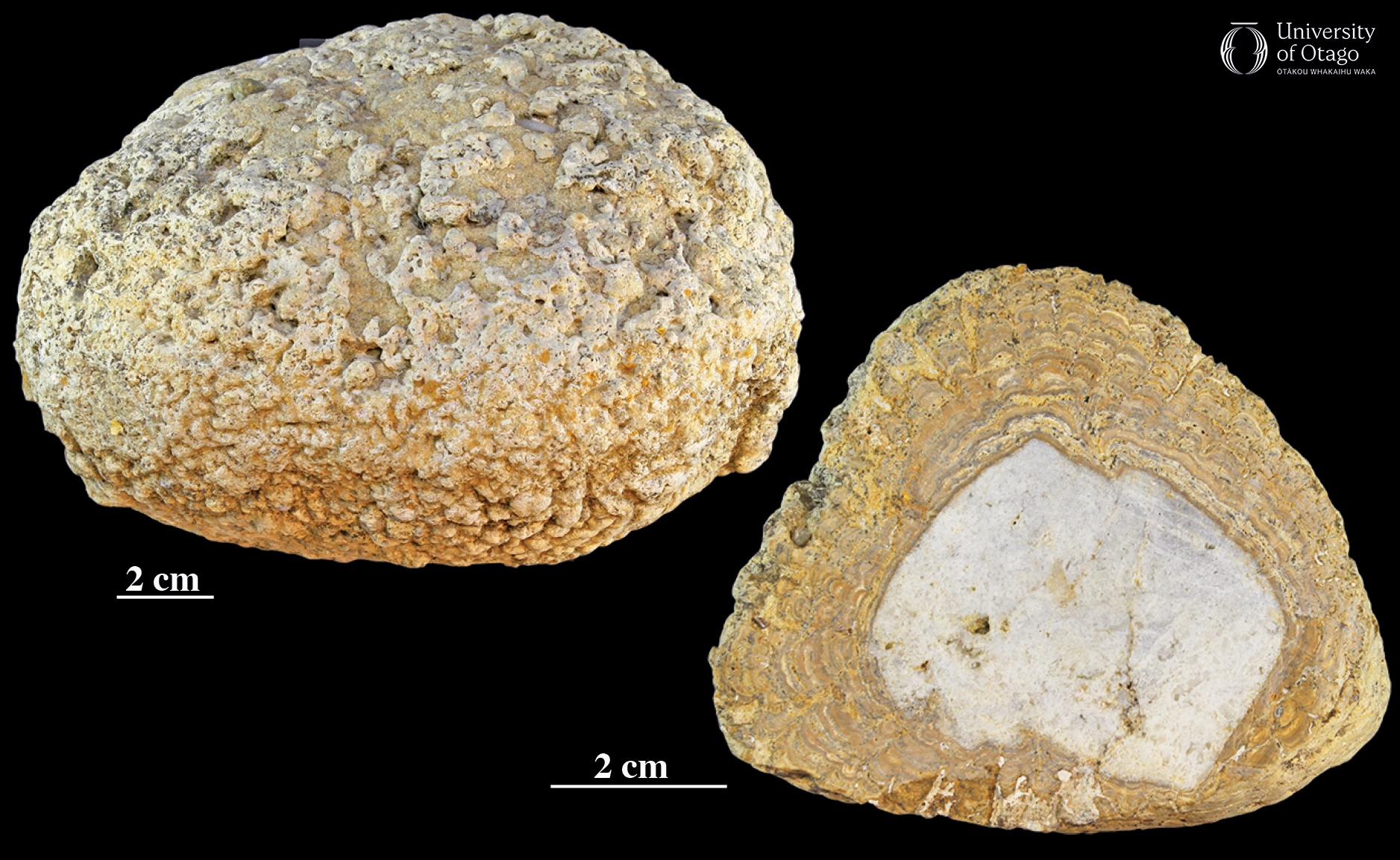58 Small boulders of fossil bacteria
Prokaryota, Cyanobacteria
Stromatolites are some of the oldest fossils known on Earth. They date back to the Precambrian, around 3.5 billion (yes, billion) years ago and are still living in some part of the world today, generally in quite unusual environments. The best-known modern examples can be seen at the World Heritage site at Shark Bay, on the northeastern coast of Western Australia.

An example of a calcareous stromatolite formed by cyanobacteria encrusting an angular quartz pebble. Image credit: JH Robinson. |
We have no stromatolites of this vast age in Aotearoa New Zealand, but we have some remarkable examples from the Miocene of Central Otago. They lived during the Early Miocene near what is now St Bathans. These stromatolites formed in shallow waters at the margin of a very large freshwater lake, Lake Manuherikia (see: Crikey! Lake crocodilian from Central Otago).
These stromatolites look like a rock cauliflower on the outside, but when sliced through, their unusual finely layered structure is revealed. They begin when a hard nucleus of some kind, in this case, a small quartz pebble from the Otago schist, is coated with a sticky layer of cyanobacteria, sometimes known as blue-green algae. Over time, new layers are added, together with fine calcareous sediment, so the stromatolite increases in diameter. If it is growing on a large rock, it will form a layered mat. However, if it has encrusted a smaller pebble such as in this example, waves can roll it around on the lake shore in stormy conditions to form a nearly spherical stromatolite. They can only live in very shallow-water (less than 4 metres deep) as the cyanobacteria need sunlight for photosynthesis.
—Written by Daphne E Lee
| Locality: Near St Bathans, Central Otago | Age: 18.7 to 15.1 million years ago (early or middle Miocene, Altonian or Clifdenian stage) |
| Collected by: J K Lindqvist | Rock Formation: Bannockburn Formation |
| Citation: Lindqvist JK. 1994. Lacustrine stromatolites and oncoids: Manuherikia Group (Miocene), New Zealand. Pp. 227-254 in: J Bertrand-Sarfati, C Monty (eds.). Phanerozoic Stromatolites II (Springer, Dordrecht). doi.org/10.1007/978-94-011-1124-9_9 | |
4.6 billion years ago to around 538.8 million years ago.
23.03 million to 15.97 million years ago. The Early Miocene is a sub-epoch that spans the international Aquitanian and Burdigalian stages.

